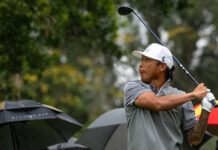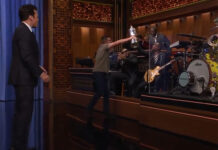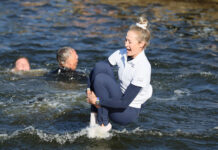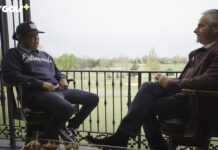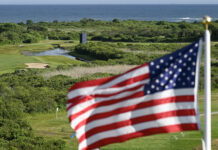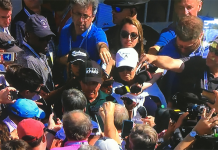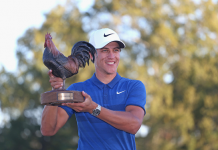
In the end, the USGA may have gotten away with one. They took a badly needed Mulligan, made the right strategic tweaks and came up with a Sunday finish worthy of the prestige of the U.S. Open. Brooks Koepka played U.S. Open-worthy championship golf.
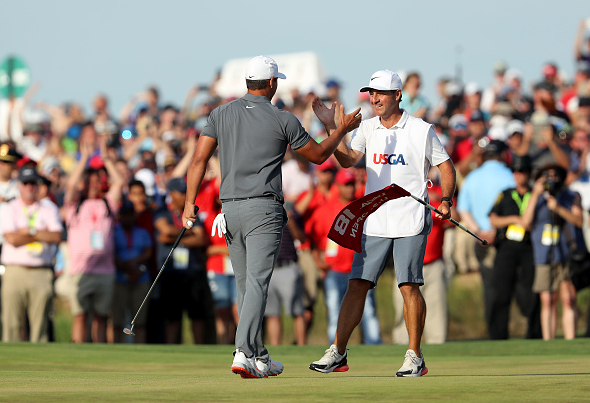
But the carnage that marred Saturday afternoon at Shinnecock Hills can not afford to be glossed over.
Our national championship of golf deserves to be a stern test. Everyone knows that’s the deal going in. But when you get to the point where you’ve basically made producing a scoring opportunity on the golf course not a matter of skill but closer to the odds that come with a spinning roulette wheel, you have to own it.
To their credit, the USGA did — after the fact. Executive Director Mike Davis faced the music with the media after Saturday’s round, and admitted as much.
“We felt that it would work well given the forecast we had, but I think that, now that I’m sitting here, we would say that parts of this test of golf simply were too tough,” said Davis.
But true golf fans have to wonder: How did the USGA put itself in this position once again — after getting so battered in 2004, the last time the Open was at Shinnecock — about the course becoming unplayable?
Almost no one besides eventual winner Retief Goosen recalls 2004 at Shinnecock with any fondness. With the title on the line, not a single player broke par on Sunday and the average score for the field was more than eight strokes over par. It was almost unanimously seen as a debacle rather than a fitting test of golf.
Changes were made to be ready for 2018. The greatly respected architecture team of Bill Coore and Ben Crenshaw were brought in to address issues that were identified as keeping a tough course on the right side of the line of playable/unfair. Fairways were widened. Some greens and adjacent fringe areas were expanded.

In fact Davis was so confident just a month ago, that he essentially guaranteed that 2004’s debacle would not be repeated.
“It’s been 14 years, and it’s a different time, with different people,” Davis boasted in late May at the U.S. Open’s Media Day.
“When you set up a U.S. Open, it is golf’s ultimate test and is probably set up closer to the edge than any other event in golf. The difference between then and now is that we have a lot more technology and a lot more data. And frankly, what basically happened then was a lack of water.”
During the same May press conference, Davis also bragged about the USGA’s ability to predict and monitor the wind.
“The meteorology is better, so we not only know where the winds are coming from but the velocities,” said Davis. “And, frankly, there’s better communication between the USGA and the grounds staff.”
Yet, despite all the pre-planning and predicting, somehow the USGA, on Saturday afternoon, let the greens lapse back into that same penal condition that caused so much uproar in 2004.
Ironically, Davis blamed the USGA’s inability to predict the velocity of the winds, something he had bragged about less than a month ago.
“What happened is we simply got higher winds than we anticipated. The grass really began to dry out. In fact, if you looked at it at the end, it was almost wilting around there, and it just didn’t have enough grass to hold the ball up,” said Davis.
The fiasco opened the door for a potentially bastardized edition of perhaps golf’s greatest prize. Daniel Berger and Tony Finau were both 11 shots off the lead going into Saturday. Playing in less wind and on greens that still accepted quality shots in the morning, they each shot rounds of 66. By the time the leaders limped to the finish on Saturday afternoon, Berger and Finau had gone from starting the day tied for 45th to being 54-hole co-leaders. Only one time in history has a U.S. Open champion come from as far back as 11 strokes to win the title over the final 36 holes. Berger and Finau essentially made the same journey in just 18 holes.
Obviously, they played great rounds, but there was a lot more to their climb than that.
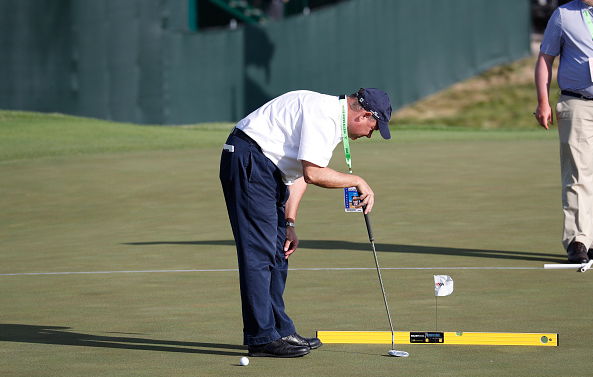
The players who had put themselves in the best position in the first two rounds were brutalized. The average score among the final 14 players to finish on Saturday was 76.9 strokes, far too close to the scoring average of Sunday 2004 for anyone’s comfort.
“Listen, I think everybody, without stating the obvious, it was a tale of two different golf courses today. Even the first two days, if you look at how the golf course played the morning round, morning wave versus afternoon wave, it was significant reply different in those days as well,” confessed Davis on Saturday evening.
“You know, the team that sets it up, there’s about eight of us, part of the setup team that does the U.S. Open. I will tell you that we felt good about the setup when we left this morning when we were done with the setup.”
Had Berger or Finau become the 2018 champ because of the Saturday a.m./p.m. scoring disparity, some would have surely insisted that there ought to be an asterisk next to their name in the record book. You could make a similar argument, as well, from the opposite side for Tommy Fleetwood.
He was tied for fourth after a Friday round of 66, putting him in the danger zone of Saturday afternoon tee times. His reward came on the 10th hole, where he drove it into the fairway only 131 yards from the pin. One bad swing put him in a spot where it took him four shots to get on the green. He then three-putted from just outside of 12 feet for a triple-bogey, doing much of the damage that resulted in a 78.
Fleetwood then played a couple of hours ahead of the leaders on Sunday and bounced back with a record-tying 63, ultimately good for second place, one shot behind Koepka. Would he have gotten into the same zone if he were playing among the leaders? If he had known where Koepka stood, could he have made up that last stroke? That’s impossible to know.
Despite the near-miss for history, Fleetwood chose to take the high road.
“It battered us on Thursday and Friday morning and Saturday afternoon. It’s difficult. There’s no point in complaining too much about the setup or about the conditions. It is what it is. At the end of the week, somebody’s going to win,” said the 27-year old Fleetwood, who moved to No. 10 in the world rankings.
“It’s a brutal golf course when the wind picks up, and that makes all the difference.
“Today, it was a bit softer. The pins were a little bit nicer, and it’s scorable. And I think courses — well, courses that you can shoot 7 under or 8 over in a two-day stretch have a lot about them, and they’re actually very good. But, yeah, it all depends on the actual setup and how it is and the conditions.”
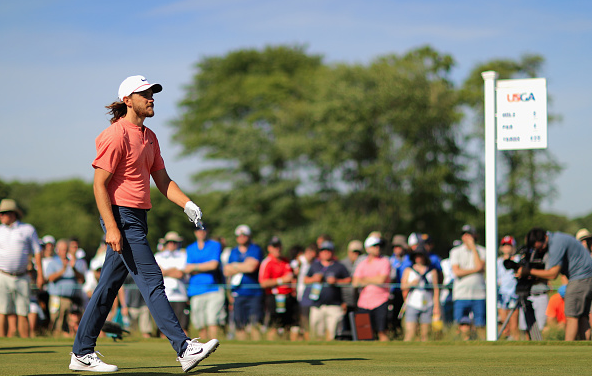
What is possible to surmise is that when you have players ranked in the top 15 in the world — and Fleetwood came into last week ranked No. 12 — shooting scores 15 strokes different on consecutive days, there are significant issues in play beyond the player’s ability.
Fleetwood wasn’t the only one, either. Last week’s world No. 7, Rickie Fowler, had the head-spinning experience of posting scores of 69-84-65 over the final three rounds. (And we won’t even delve into the Phil Mickelson Saturday display of frustration.)
These wild swings in the standings will ultimately be the co-headline to the legacy that sticks to the 2018 U.S. Open, which is a shame for Brooks Koepka, who rightfully deserves to be remembered singularly for achieving the feat of back-to-back Open titles. But if Koepka was the winner, the ultimate losers from this scenario are golf fans, who will rightly look at the U.S. national championship in coming years with additional cynicism toward its ultimate fairness, and the USGA and golf itself.
“We want the U.S. Open to be tough, but we saw some examples late in the day where well executed shots were not only not being rewarded, but in some cases penalized,” Davis said.
The guardians of golf were admittedly caught off-guard on Saturday afternoon, and they need to implant that lesson deep in their collective memories. Their motto is “For the good of the game,” and even with years to plan, they whiffed badly on that count Saturday with the whole golf world watching.
They need to keep that lesson ingrained in planning for all future Opens.




